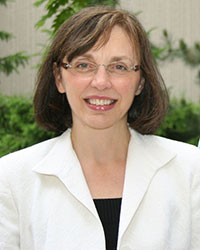The Art Institute of Chicago and McCormick
In January scientists from the Art Institute of Chicago and the McCormick School began an exciting educational seminar series focused on problems and techniques common to conservation science and engineering and the physical sciences. Why would McCormick and the Art Institute develop a joint lecture series? By bringing the two communities together, the education of both will be enhanced. The seminars will allow researchers at Northwestern to learn about critical problems in conservation science, while conservation staff at the Art Institute will explore techniques and methods in engineering that may advance their work in conservation.
 McCormick's Department of Materials Science and Engineering is consistently ranked as one of the best materials science departments in the country, and faculty members have expertise in nearly all aspects of metals, ceramics, and polymers. The Art Institute possesses one of the world's finest collections of art - art comprising diverse materials - and its 20 conservators face on-going challenges preserving its collection and enhancing the scholarly knowledge of its artifacts.
McCormick's Department of Materials Science and Engineering is consistently ranked as one of the best materials science departments in the country, and faculty members have expertise in nearly all aspects of metals, ceramics, and polymers. The Art Institute possesses one of the world's finest collections of art - art comprising diverse materials - and its 20 conservators face on-going challenges preserving its collection and enhancing the scholarly knowledge of its artifacts.
"It is anticipated that these joint seminars will provide information about innovation in conservation science that will lead to very productive research collaboration for both institutions," says Katherine Faber, professor of materials science and engineering.
The Andrew W. Mellon Foundation provided funding for the 2005 seminar series, which is open to all members of the national academic and conservation communities. The series was jointly developed by Faber and Francesca Casadio, Andrew W. Mellon Conservation Scientist at the Art Institute, who were seeking ways to cross-fertilize talent and share resources between the two institutions.
"In order to answer the complex questions posed by works of art, fundamental scientific research must extend beyond the expertise of any one scientist or the borders of any one analytical facility within a museum to include collaboration with scientists in academia," says Casadio. "Good communication is the starting point of successful collaboration. I am very pleased to see that our joint seminar series has potential to become a model for integrative and cross-disciplinary collaboration among museums and universities in the effort to strengthen the field of conservation science in this country."
The first seminar, held in January at Northwestern, featured lectures by Brian Newbury of the materials science and engineering department at Lehigh University; Vinayak Dravid, professor of materials science and engineering at McCormick; and Heather Lechtman, professor of archeology and ancient technology and director of the Center for Materials Research in Archaeology and Ethnology at the Massachusetts Institute of Technology - all of whom explored the latest analytical tools used for characterizing metallic artifacts. The audience of scholars included representatives from such local institutions as Argonne National Laboratory, the Field Museum, the Oriental Institute, and the McCrone Research Institute as well as from the Metropolitan Museum of Art and the Milwaukee Art Museum.
"This was an excellent beginning to an exciting collaboration between two major institutions," says Faber. "We are very pleased to be a part of this initiative and to see such a broad representation of the academic and museum communities at the first seminar."
The second seminar, held in March, addressed color science and imaging in museums and engineering and was held at the Art Institute. Roy Berns, R. S. Hunter Professor in Color Science, Appearance, and Technology at of the Center for Imaging Science at the Munsell Color Science Laboratory (Rochester Institute of Technology) discussed Georges Seurat's A Sunday on La Grande Jatte. His talk included an in-depth account of the elaborate scientific processes involved in the reconstruction of the original colors of Seurat's masterpiece. Jay Walsh, associate dean for research and graduate studies and professor of biomedical engineering at McCormick, discussed digital imaging techniques in biomedical engineering, with an emphasis on applications of innovative techniques that can be useful not only in the study of biological
In May the third seminar, entitled "
For more information on the seminar series, contact Katherine Faber at k-faber@northwestern.edu.
